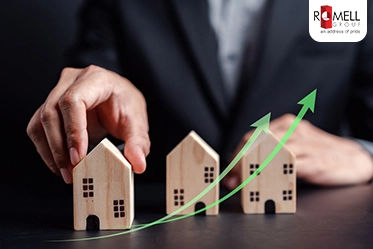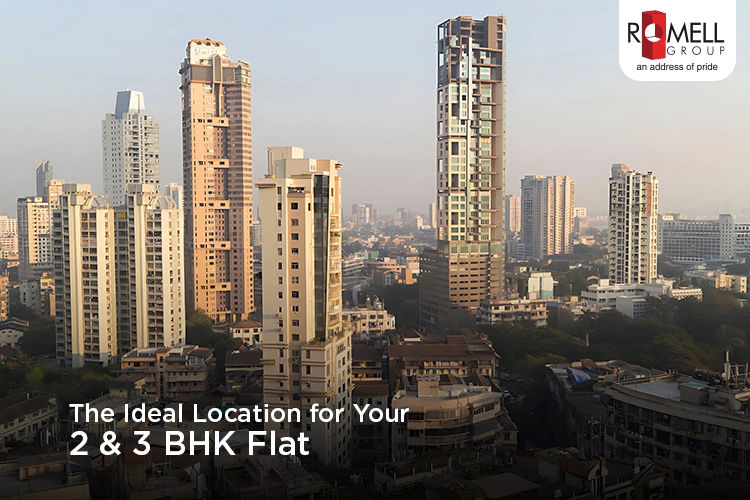The Evolution of Investor Preferences: A Deep Dive into Real Estate Choices
In India, real estate accounts for a large portion of people’s wealth. A recent report indicates that Mumbai’s real estate market registered 11,742 properties in February 2024, 21% more than the 9,684 registered in February 2023.
The world of real estate investment transformed amicably over the years. Major factors that affects investors interest are economic trends, technological advancements, and evolving investor preferences.
From traditional residential properties to innovative commercial ventures, investors are navigating a dynamic landscape filled with opportunities and challenges.
The size and scale of the real estate market make it an attractive and lucrative sector for many investors. In this article, we explore the evolution of investor preferences in real estate, delving into the factors driving these changes and the emerging trends reshaping the industry.
Factors Driving the Real Estate Market
Historical Perspectives
To understand the current state of real estate investment preferences, it’s essential to examine the historical context.
Traditional forms of real estate investment- residential & commercial properties- have long been favoured by investors for their stability and potential for long-term growth. However, as markets have evolved, so too have investor preferences.
Shifts in Demographics and Lifestyle
One of the primary drivers of change in real estate investment preferences is demographic shifts and evolving lifestyles.
Millennials, now the largest demographic group in many countries, are reshaping the market with unique preferences and priorities. This generation values experiences, convenience, and sustainability, leading to increased demand for mixed-use developments, urban living spaces, and eco-friendly properties.
Technology and Innovation
Technology has revolutionized every aspect of the real estate industry, from property management to investment strategies.
Real estate technology, or PropTech, has enabled investors to access data-driven insights, streamline processes, and explore new opportunities. Platforms offering fractional ownership, crowdfunding, and digital marketplaces have democratized real estate investment, allowing individuals to participate in previously inaccessible projects.
Sustainable and Impactful Investing
There has been a notable shift towards sustainable and impactful investing in real estate in recent years.
Today, investors consider environmental, social, and governance (ESG) factors when making investment decisions. Sustainable buildings, energy-efficient developments, and projects that prioritize community engagement and social impact are gaining traction among environmentally conscious investors.
Resilience and Adaptability
The COVID-19 pandemic highlighted the importance of resilience and adaptability in real estate investment.
The sudden shift to remote work, changes in consumer behaviour, and economic uncertainty prompted investors to reassess their strategies and preferences. Properties that offer flexibility, such as coworking spaces, logistics facilities, and healthcare real estate, are becoming increasingly attractive to investors seeking stable returns in a volatile market.
Globalization and Diversification
Globalization has opened new opportunities for real estate investors to diversify their portfolios and access international markets.
Cross-border investments, real estate investment trusts (REITs), and portfolio diversification strategies allow investors to spread risk and capitalize on emerging trends in different regions. As geopolitical landscapes evolve, investors carefully navigate opportunities and risks in a rapidly changing global economy.
Why Mulund is Becoming Investors’ First Choice?
Investors are increasingly drawn to Mulund, a strategically located suburb in northeastern Mumbai, for many reasons. One key factor is its robust infrastructure development, which includes well-connected road and rail networks, enhancing accessibility to and from other parts of the city.
This infrastructure growth not only improves the ease of doing business but also enhances the overall appeal of Mulund for both residents and businesses alike. Moreover, the area boasts a diverse range of real estate opportunities, from residential to commercial and industrial, presenting investors with a plethora of options to diversify their portfolios.
Furthermore, Mulund’s burgeoning real estate market is underpinned by a growing demand for both residential and commercial properties. This demand is fueled by factors such as its favourable location, improving infrastructure, and relatively better quality of life compared to more congested parts of Mumbai.
Most of the upcoming residential projects provide 1,2, and 3 BHK flats in the area with premium amenities at affordable prices. Romell Vasanthi, for instance, provides 2 BHK in Mulund East. It’s a residency for those seeking a coveted lifestyle. The facilities like the gymnasium and power backup are top-notch.
Investors see the potential for substantial capital appreciation in Mulund, making it an attractive investment destination. Additionally, the positive market sentiment towards Mulund further bolsters investor confidence, catalyzing investment flows into the area.
In essence, Mulund’s appeal to investors lies in its strategic location, robust infrastructure, diverse real estate opportunities, growing demand, potential for appreciation, and positive market sentiment.
To Conclude
The evolution of investor preferences in real estate reflects broader societal trends, technological advancements, and economic shifts.
From traditional assets to innovative ventures, investors embrace diverse opportunities to achieve their financial goals while addressing environmental and social considerations. As the real estate landscape evolves, staying informed about emerging trends and adapting to changing preferences will be essential for success in this dynamic industry.








